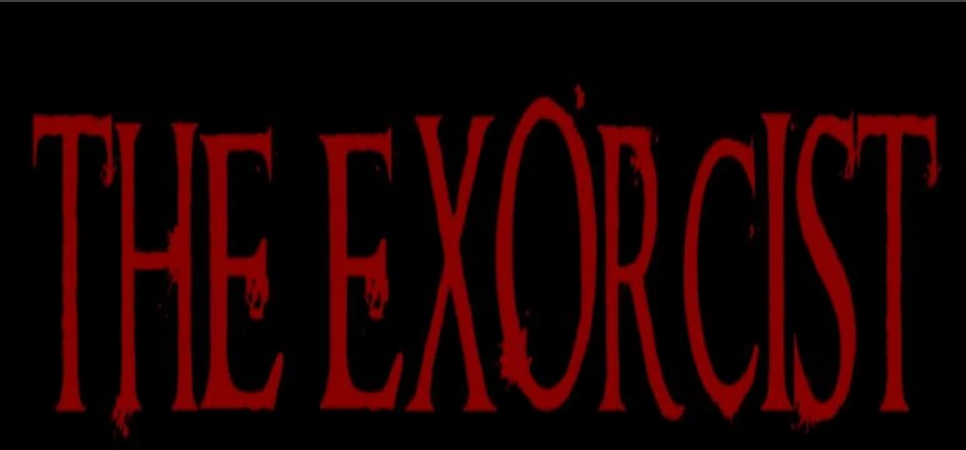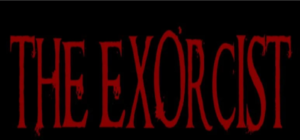
This serial column revisits The Exorcist television series. Conceived by Jeremy Slater for FOX and starring Ben Daniels, Alfonso Herrera, Geena Davis, and Alan Ruck, the show ran 2016-17 and was generally well-received by critics and audiences. DIS/MEMBER returns to the show in the context of a new Exorcist franchise film, seeking insight on what made the show work and why it’s lesser-known than its film counterparts. All screencaps sourced from Kiss Them Goodbye.
I watched The Exorcist as it aired on FOX (via Hulu) in 2016 and 2017, steeped in the immediate world of Donald Trump’s position in American politics and the more diffused landscape of the Girl Internet. One of the show’s stars, Alfonso Herrera, was riding a wave of intense post-Sense8 popularity; its other, Ben Daniels, had just made The Hollow Crown and Rogue One. The confluence of these properties on the Girl Internet (chiefly Tumblr by then) made it seem as though everyone was watching them–them, and their nexus: The Exorcist. Imagine my surprise when I announced my plans to re-watch the Blattyverse TV series in 2023 and none of my real-life friends had seen it.
“And Let My Cry Come Unto Thee” aired in late September 2016, priming the autumn home viewership for a Halloween season full of fresh Exorcist thrills. By positioning itself as a sequel to the 1973 film, it dispensed with the messy need to be in continuity with several other movies… and also boldly stepped to a celluloid masterpiece with few rivals.
By this point, the Exorcist universe was well-established, five films and three novels deep. American horror cinema had also been saturated with other religious horror franchises, including the Nun and Conjuring universes, and the notion of an Exorcist TV series seemed both tired and challenging. Nevertheless, Father Tomas (Herrera) and Father Marcus (Daniels) arrived with a splash of blood in a banger pilot episode that made no bones about its lineage or its ambition. Whether dripping sweat in a Mexico City tenement or sporting pristine vestments in Chicago, the priests are immediately unified by their willingness to stand at the height of those they serve.
A darker sort of unity pervades the pilot as well: the demonic echo of many hands, many voices. Hell’s Legion is hinted at throughout, showing its multitude of faces in glimmering dust motes, barking feral dogs, a coterie of xylophone players, the bedrooms of clergy at a retreat. While Father Marcus battles a demon possession case and the greater Church’s resistance to exorcism as a practice, Father Tomas’s troubles seem more mundane. He’s apparently involved in matters of the flesh with a woman named Jessica; his church needs restoration; most notably, his parish contains a family going through some shit.
Geena Davis and Alan Ruck are pillars for a fledgling TV show, delivering performances as the Rance family matriarch and patriarch that are troubling in different ways. Saddled with a daughter home from college, recovering from a vague car accident, and acting out, Angela Rance seeks to affirm her place in the universe. Shades of Gaslight appear as she recounts items out of place in the house and refers to her own sense of control, her position of authority at work, her daughter and her home.
Is she a woman experiencing something supernatural, a woman who will be disbelieved? Is the cruelty of older daughter Kat toward father Henry devilish in origin, or simply young-adult growing pains? What’s younger daughter Casey’s place in the family? Is Henry’s malaise due solely to a recent illness, or is he beset by otherworldly powers? The pilot excels in establishing a universe both in which demon possession is real–Father Marcus’s efforts culminate in a truly troubling scene of child death–and human pain comes from human sources. The desire to ascribe suffering to a higher (or lower) power is likely universal. The Exorcist traffics in the vast grey desert of doubt: how are we to trust that what Father Marcus is doing is right, or necessary, when we know about the Catholic Church’s very real history and continuation of abuse and suffering?
“You’re exactly the man the Church needs right now,” a clergyman at the Saint Thomas Aquinas retreat tells Father Tomas. An appeal to the vanity of a rising star, perhaps–or damning with faint praise, considering the reveal that this clergyman is possessed by a demon. If eyes are the windows to the soul, “And Let My Cry Come Unto Thee” delights in subverting the connection felt between two people making eye contact. A second pupil slides into view to signal possession; luminous eyes are the first part of a face to appear from a bedroom’s darkness; what Tomas’s eyes witness in his dreams is beyond the capacity of human sight.
Most effectively, a dark eye forms in the ceiling of the Rance home, a gateway to the shadowy attic above and its decaying flowers. A ladder descends, and Father Tomas takes his first step toward what, according to Father Marcus, is beyond his understanding. Having downplayed demon possession as merely a metaphor, he’s about to be forced to reckon with its reality… or the real-world effects of falsehood on those who believe. “They’re gonna love you,” Marcus tells his compatriot. They Tomas’s parish already do. They the Catholic Church have their eye on him. They the Legion of Hell? They may be waiting with open arms–to destroy, or to assimilate.
As a non-Catholic, exorcism has never been particularly interesting to me. As a Mormon, I was late to all the great or interesting films, blitzing through movies as diverse as Raising Arizona, The Godfather, The Serpent and the Rainbow, and the original Exorcist in a sort of Lost Weekend my first month of college. Categorically, I don’t feel about The Exorcist as I “should,” as an American partaking in American pop culture. Its fears aren’t native to my upbringing; its visuals provoke interest rather than terror or dread; above all, I feel some resentment that “Catholic” has so thoroughly overlaid American horror. The results are often desultory, aesthetic trappings decorating a hollow core. At the time of original viewing, I was in it for the camaraderie of talking about a show with my friends online. The fact that the show was well-made and thought-provoking was icing on the cake. Now I’m interested in whether my recollections of TV greatness were accurate, the ways a beloved show can change in the interim, why we revisit at all. Now I’m interested in how other Christians respond to Catholic horror.
Now, I’m ready to be frightened.






![[ZINE] WE DON’T GET MUCH TRAFFIC THROUGH THESE PARTS IN THE WINTER: ‘RAVENOUS’ 20 YEARS LATER](https://www.dis-member.com/wp-content/uploads/2019/12/streaming-horror-ravenous-150x150.jpg)
![[LIST] HORROR STANDOUTS FROM THE 2010s](https://www.dis-member.com/wp-content/uploads/2019/12/KillList_web1-150x150.jpg)
![[LISTS] SHOCKTOBERFEST 2020, THIRD EDITION](https://www.dis-member.com/wp-content/uploads/2020/09/shocktbanner-150x150.png)


Average Rating